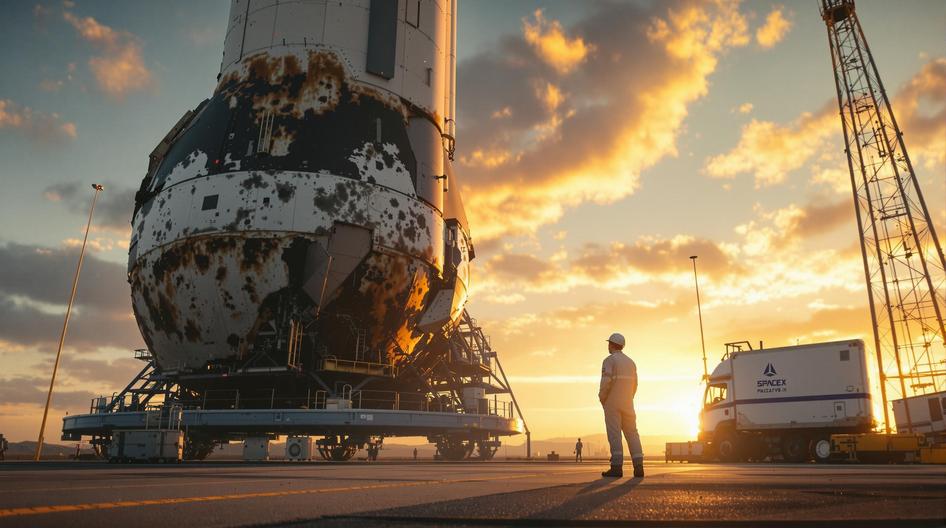
SpaceX Lands Golden Dome Contract as Defense Tech Investors Brace for More Volatility
October’s choppy trading hasn’t stopped Washington from writing a multibillion dollar check, and it just triggered one of the most closely watched defense stories of the fall. SpaceX has secured a $2 billion Pentagon contract to build the satellite layer of the Golden Dome missile warning network, giving Elon Musk’s company a new foothold in national air defense while market watchers prep for Palantir and Robinhood earnings. With geopolitical tensions simmering, the deal is more than a cash infusion. It is a signal that the United States plans to lean on commercial launch providers and data platforms to modernize how it tracks threats from the stratosphere down to the runway.
What the Golden Dome Contract Covers
According to the Wall Street Journal, the Golden Dome blueprint calls for roughly 600 satellites in low Earth orbit that can flag incoming missiles or aircraft before they breach American airspace. The Pentagon wants responsiveness, not just raw coverage, so SpaceX will have to deliver a mesh that relays data in seconds rather than minutes. Can a commercial network designed for high performance internet be tuned to distinguish a cargo jet from a hypersonic glide vehicle? That is the kind of question the U.S. Space Force is betting this contract will answer. The Golden Dome concept mirrors Israel’s Iron Dome, only in orbital form, which means a tighter focus on detection and targeting support rather than direct interception. Details on sensor payloads and command interfaces remain classified, yet the urgency isn’t in doubt. As SpaceX continues to scale Starlink, analysts will watch how much of that manufacturing playbook can be applied to this defense-grade constellation without slowing consumer deployments.
The award also positions SpaceX as a key player in layered defenses that blend terrestrial radar, stealth aircraft, and space-based surveillance. The company already fields launches for the military, but the Golden Dome gives it an active role in persistent monitoring. Readers curious about how a dense satellite web can reshape connectivity should take a look at Starlinks expanding constellation, where the ripple effects of rapid deployment are mapped out across telecom and defense sectors.
How Washington Prepared the Ground
The funding stream for Golden Dome traces back to the July omnibus spending bill that carved out $24 billion through 2029. That legislation was designed to backstop a range of national security initiatives, yet it kept the vendor roster under wraps until now. The political context matters here. Elon Musk played a visible role early in President Donald Trump’s second term, spearheading a government efficiency audit before a public falling out over budget priorities. Despite that, the Pentagon has continued to lean on SpaceX for launch and satellite services. Budget watchers who want to revisit the legislative footing can review the Congressional Research Service summary of the spending bill.
Golden Dome isn’t being built in a vacuum. The Defense Department is simultaneously trying to modernize tracking networks, expand command-and-control software, and secure civilian infrastructure. For a broader view of why resilience is now a cross-sector mandate, the analysis in securing the digital grid outlines how cyber and kinetic threats are converging on the same playbook.
Rivals and Collaborators Eye the Opportunity
SpaceX wasn’t the only contender for Golden Dome. Anduril and Palantir pitched a partnership bid that would have paired SpaceX’s launch cadence with Palantir’s analytics backbone. Traditional primes like Northrop Grumman, Lockheed Martin, and Raytheon also expressed interest. The fierce competition underscores how defense tech firms see integrated sensing and AI as the next growth frontier. Investors can revisit how the field stacked up in IBD’s coverage of the Golden Dome bidding war.
Why does this matter now? Palantir is set to report earnings just as the Golden Dome announcement reshapes expectations around government contracts. A positive read could reinforce Palantir’s argument that it is indispensable for national security analytics, even without direct participation in the satellite build. Curious about how automation and intelligence agents are reshaping enterprise work? Check out AI agents on the rise, which explains why these software layers pair so well with real-time defense data. The next few quarters may reveal whether Palantir pivots toward complementary roles like data fusion for Golden Dome or doubles down on other federal programs.

Market Signals and Investor Takeaways
MarketSurge data shows the Aerospace and Defense sector up 33 percent year-to-date, a run that has outpaced the major indexes despite October’s volatility. Contracts like Golden Dome can stabilize revenue projections for companies with the balance sheets to deliver, but they can also raise anxiety about execution risks. Should investors treat this award as a buy signal for defense-heavy portfolios or a reminder that valuations already bake in a lot of optimism? That question hangs over the next earnings cycle, especially with Palantir and Robinhood set to report. IBD’s market team is tracking that dynamic in Palantir, Robinhood earnings coverage.
Golden Dome also reinforces how emerging tech like quantum-resistant communications and autonomous drones are moving from prototypes to procurement lists. The strategic stakes are unpacked in quantum computing at the crossroads, while the practical deployment scenarios are highlighted in next-gen drones disrupting security. Put together, they paint a picture of defense ecosystems where software-defined hardware and AI decision support are the baseline expectations, not future aspirations.
Beyond SpaceX: Intuitive Machines Extends Its Footprint
SpaceX wasn’t the only company to earn a federal nod this week. The Air Force Research Laboratory granted Intuitive Machines an $8 million contract extension to explore how nuclear power could sustain long-duration missions, especially in cislunar space. The Houston-based firm saw its stock jump 4.9 percent to 11.93 on the news, underlining how even modest awards can reset investor sentiment around lunar technologies. The context behind that move is detailed in IBD’s report on Intuitive Machines and Musk’s federal ties.
Nuclear-powered spacecraft might sound like a sci-fi teaser, yet the research dovetails with the Pentagon’s appetite for assets that can patrol or resupply in orbits where solar power is inconsistent. It also hints at broader adoption of autonomous agents and remote analytics. For a deeper dive into how automation is spreading across industries, the breakdown in autonomy redefining tech explores the crossover between defense, aerospace, and commercial applications.
What Comes Next for Golden Dome
SpaceX already runs two Pentagon projects: Milnet, a secure communications backbone, and a satellite-based vehicle tracking system. Golden Dome adds a third pillar focused on early warning. Expect the initial milestones to revolve around orbital slot assignments, payload integration, and interoperability testing with existing radar networks. How quickly can SpaceX shift from contract award to on-orbit capability without straining Starship development or Starlink production? Investors and policymakers alike will watch those timelines closely.
Looking ahead, it will be worth monitoring how software-defined payloads evolve once the constellation is live. Will the military open the door to third-party analytics providers such as Palantir after all? Or will it keep the data pipeline tightly under government control? Those choices could influence how future RFPs are structured. For context on the balancing act between innovation and oversight, the analysis in navigating the new AI frontier outlines how agencies are negotiating rapid adoption without losing accountability. And if you are curious about how the broader tech ecosystem is recognizing the stakes, IBD’s news hub is tracking each contract twist alongside market repercussions.
From a policy perspective, Golden Dome is as much about deterrence as detection. It blends commercial launch momentum with public funding to create a real-time sensor web that can feed both command centers and AI-driven support tools. Will it be enough to keep pace with adversaries that are also fielding hypersonic missiles and stealthy UAVs? The coming years will test whether SpaceX’s manufacturing agility and software upgrades can keep the network ahead of emerging threats. Until those first satellites light up the sky, the market will keep asking the same question: is this the moment when commercial space officially becomes the backbone of U.S. defense, or just another high-stakes experiment?






























































































